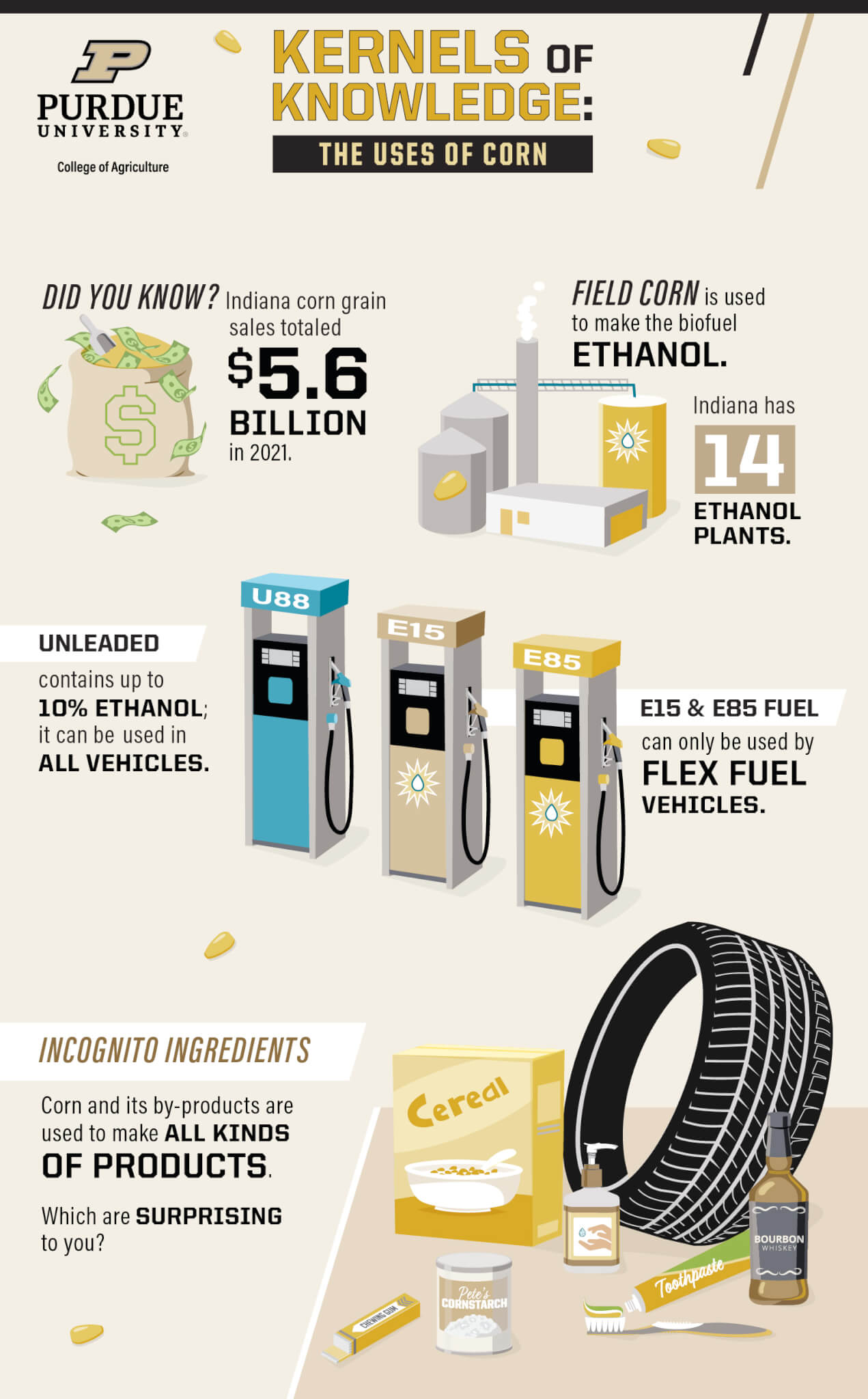Kernels of Knowledge: Harvesting for Food, Feed, Fiber and Fuel
Agriculture is a vital component of Indiana’s history, culture and future. Discover the development of corn and Purdue University’s contributions to its growth with Purdue Agriculture’s short series, Kernels of Knowledge.
Maybe the first thing that comes to mind when you think of corn is corn on the cob or hot, buttery movie popcorn. What you might not think of is minty toothpaste — but corn is found in many products we use every day. Read on to find out where Indiana-grown corn ends up.
The majority of field corn in Indiana is used for animal feed. It’s typically ground up and fed to animals like pigs, cows and chickens. Sometimes farmers store harvested field corn to sell when the market is most profitable or to use for animal feed throughout the year.
Field corn is also used to make the biofuel ethanol. Nearly all unleaded gasoline contains up to 10% ethanol, but blends with 15% ethanol (E15) and 85% ethanol (E85) are also available for vehicles with flex-fuel engines (check your owner’s manual).
During the production of ethanol, valuable coproducts are created, including distillers’ grain, a livestock feed ingredient, and carbon dioxide used to carbonize beverages and create dry ice.
Along with sweet corn and popcorn, field corn can also be found in food products like corn flakes, corn tortillas and corn meal. Sweeteners derived from corn play a critical role in many products from yogurt to jam to chewy cookies. And if you like a nightcap, you might be ending your day with corn, as well. Beverages labeled as bourbon must be made from a grain mixture that is at least 51 percent corn. Corn is also used in the fermentation of beer, whiskey, vodka and gin.
You may be surprised by how many industrial and fiber products contain some form of corn. Sorbitol, an ingredient found in toothpaste that helps create the flavoring and texture, is derived from corn. Corn byproducts are used in rubber tires, fireworks, diapers and deodorant for their chemically binding and absorbent qualities.
Purdue Agriculture researchers are also exploring how corn can contribute to the perfect texture for a popular new product: plant-based meat alternatives. Bruce Hamaker, distinguished professor and Roy L. Whistler Chair of Food Science, has been studying corn zein, a protein in corn that provides viscoelasticity, simultaneously exhibiting fluid and solid properties. Both sticky and flexible, corn zein would allow plant-based meat alternatives to be shaped into different forms that hold together well when cooked.
While Hoosiers may joke that they’re surrounded by corn, people all over the globe are surrounded by everyday products that contain some form of corn — often in surprising ways!

